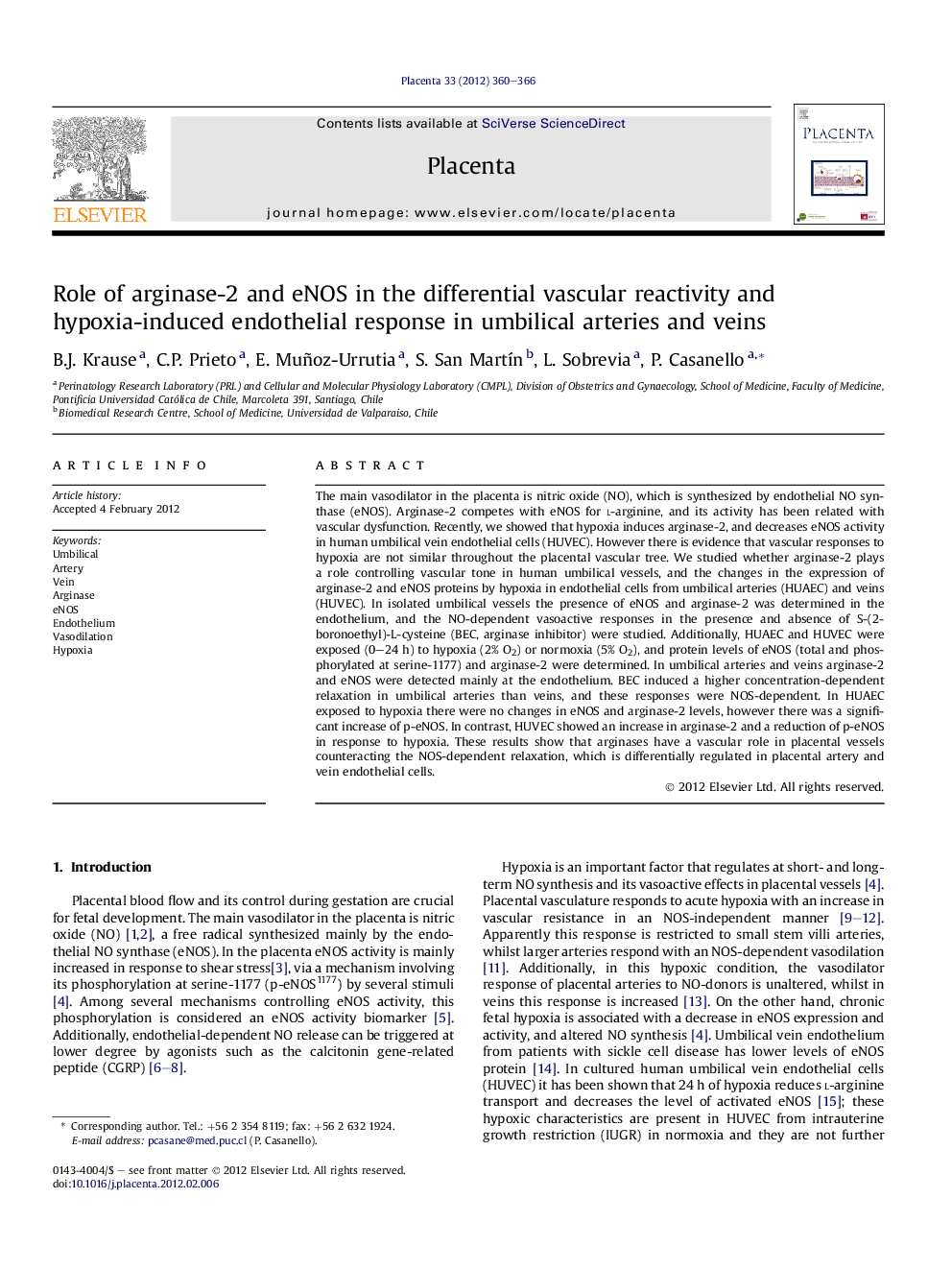| Article ID | Journal | Published Year | Pages | File Type |
|---|---|---|---|---|
| 2789256 | Placenta | 2012 | 7 Pages |
The main vasodilator in the placenta is nitric oxide (NO), which is synthesized by endothelial NO synthase (eNOS). Arginase-2 competes with eNOS for l-arginine, and its activity has been related with vascular dysfunction. Recently, we showed that hypoxia induces arginase-2, and decreases eNOS activity in human umbilical vein endothelial cells (HUVEC). However there is evidence that vascular responses to hypoxia are not similar throughout the placental vascular tree. We studied whether arginase-2 plays a role controlling vascular tone in human umbilical vessels, and the changes in the expression of arginase-2 and eNOS proteins by hypoxia in endothelial cells from umbilical arteries (HUAEC) and veins (HUVEC). In isolated umbilical vessels the presence of eNOS and arginase-2 was determined in the endothelium, and the NO-dependent vasoactive responses in the presence and absence of S-(2-boronoethyl)-L-cysteine (BEC, arginase inhibitor) were studied. Additionally, HUAEC and HUVEC were exposed (0–24 h) to hypoxia (2% O2) or normoxia (5% O2), and protein levels of eNOS (total and phosphorylated at serine-1177) and arginase-2 were determined. In umbilical arteries and veins arginase-2 and eNOS were detected mainly at the endothelium. BEC induced a higher concentration-dependent relaxation in umbilical arteries than veins, and these responses were NOS-dependent. In HUAEC exposed to hypoxia there were no changes in eNOS and arginase-2 levels, however there was a significant increase of p-eNOS. In contrast, HUVEC showed an increase in arginase-2 and a reduction of p-eNOS in response to hypoxia. These results show that arginases have a vascular role in placental vessels counteracting the NOS-dependent relaxation, which is differentially regulated in placental artery and vein endothelial cells.
